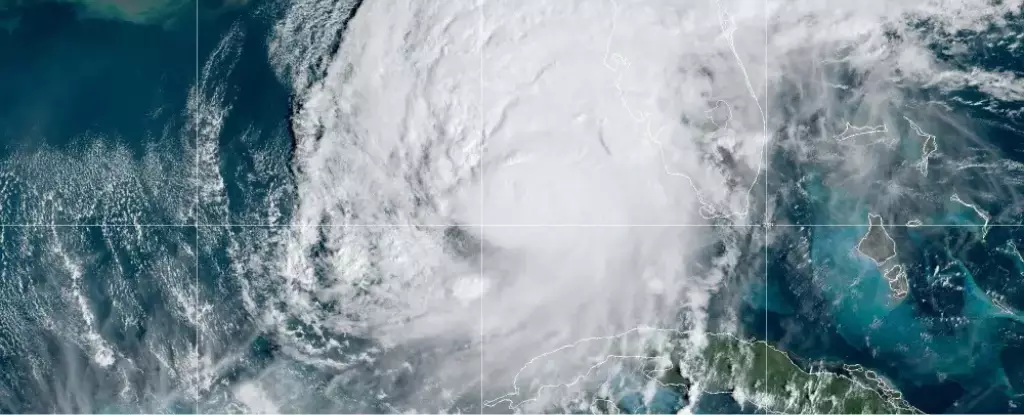The seasonal patterns of the Atlantic hurricane corridor seem to defy expectations this year. After a period of unexpected calm during August, the storm activity has surged, drawing attention to how intricate and unpredictable these weather systems can be. With Hurricane Milton intensifying to a Category 4 storm and preparing to strike Florida only days after Hurricane Helene wreaked havoc in the same state, forecasters and experts have increased urgency in their predictions. They assert that this is merely the tip of the iceberg in terms of hurricane activity for this season.
Hurricane seasons can vary immensely from year to year, influenced by an array of environmental factors. The National Oceanic and Atmospheric Administration (NOAA) initially warned of a more active hurricane season back in May, a prediction that seemed uncertain as little activity was noted between mid-August and the start of September. Typically, this timeframe marks a peak for storms in the Atlantic, hinting that the initial lull may have merely been the calm before a storm—both literally and figuratively.
Several atmospheric parameters play a crucial role in this climatic phenomenon. Meteorologists noted that prevailing weather patterns affecting moisture distribution, such as the West African monsoon and La Niña phenomenon, had shifted unexpectedly. This reconfiguration in atmospheric and oceanic conditions had significant ramifications for storm development and intensity in the Atlantic basin.
The role of Africa’s monsoon season in spawning Atlantic hurricanes cannot be overstated. This seasonal phenomenon typically provides the moisture needed for storm formation. However, reports indicated that for some time, the monsoon did not align with its typical trajectory, resulting in an abnormally quiet period for storms.
In September, research from Colorado State University’s Department of Atmospheric Science highlighted a transition back to more favorable conditions for hurricane formation. The monsoon shifted towards drier habitats, rejuvenating the potential for storm activity. With the West African monsoon regaining its momentum, the probability for generating cyclonic systems in the Atlantic moved upwards.
La Niña’s Impact and Implications
Further complicating the forecast is the impact of La Niña, characterized by the cooling of ocean temperatures in the Pacific. Usually, this phenomenon reduces vertical wind shear—an important factor for storm sustenance—in the tropics. While initially anticipated to influence storm formation earlier in the season, signs suggest La Niña conditions are just beginning to solidify now.
Matthew Rosencrans, a lead forecaster from NOAA’s Climate Prediction Center, suggested that this pattern indicates an imminent increase in storm activity, potentially shifting storms to the Caribbean and Gulf of Mexico. Indeed, the sea surface temperatures in the Gulf this year are alarmingly elevated, presenting a conducive environment for fast intensification of storms like Hurricane Milton. Warmer waters fundamentally serve as fuel for hurricanes, allowing them to strengthen with alarming rapidity.
As the next few weeks unfold, expect to witness a surge of storm formations in the Atlantic. Kelly Núñez Ocasio, an expert in atmospheric sciences, projected an environment ripe for hurricanes—a sentiment shared by many in the meteorological community. Such predictions illuminate the possibility of extended hurricane activity beyond the traditional peaks, indicating that this season may not just be a statistical anomaly but rather a hint at what we can expect in future years.
Research surrounding atmospheric moisture levels and their correlation to Africa’s climate is also noteworthy. As Núñez Ocasio explained, climate change potentially alters traditional patterns of hurricane formation, suggesting a delayed peak in activity and a shift in seasonal expectations.
Ultimately, while the mixture of unexpected calm and surging storm activity might baffle experts, the importance of preparedness cannot be overstated. Rosencrans emphasized that predicting when storms will form can be difficult, and the variance in peak hurricane season signifies that communities need to remain vigilant. As researchers continue to grapple with shifting climatic patterns, the goal remains clear: safeguarding lives and property should take precedence amid evolving meteorological challenges. In the prevailing climate change context, understanding these dynamics and fostering preparedness will be our best defense against future hurricanes.


Leave a Reply